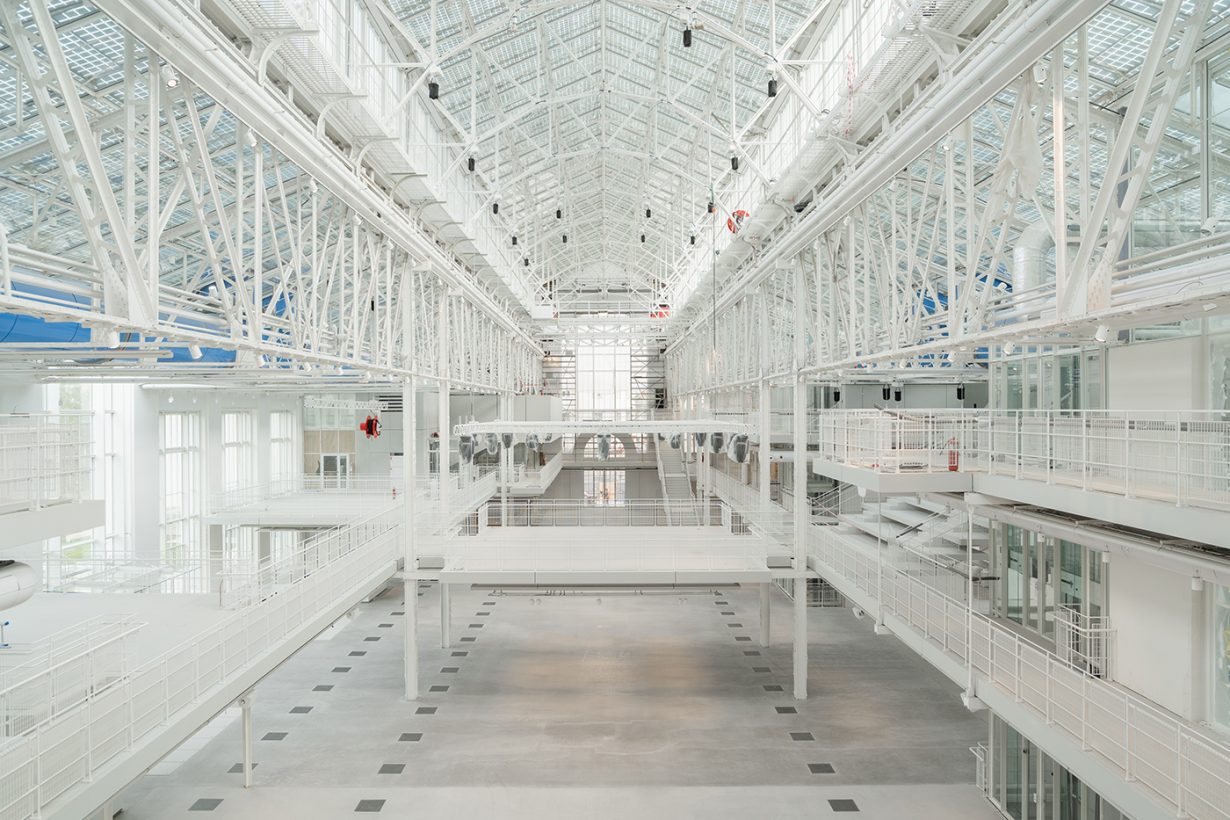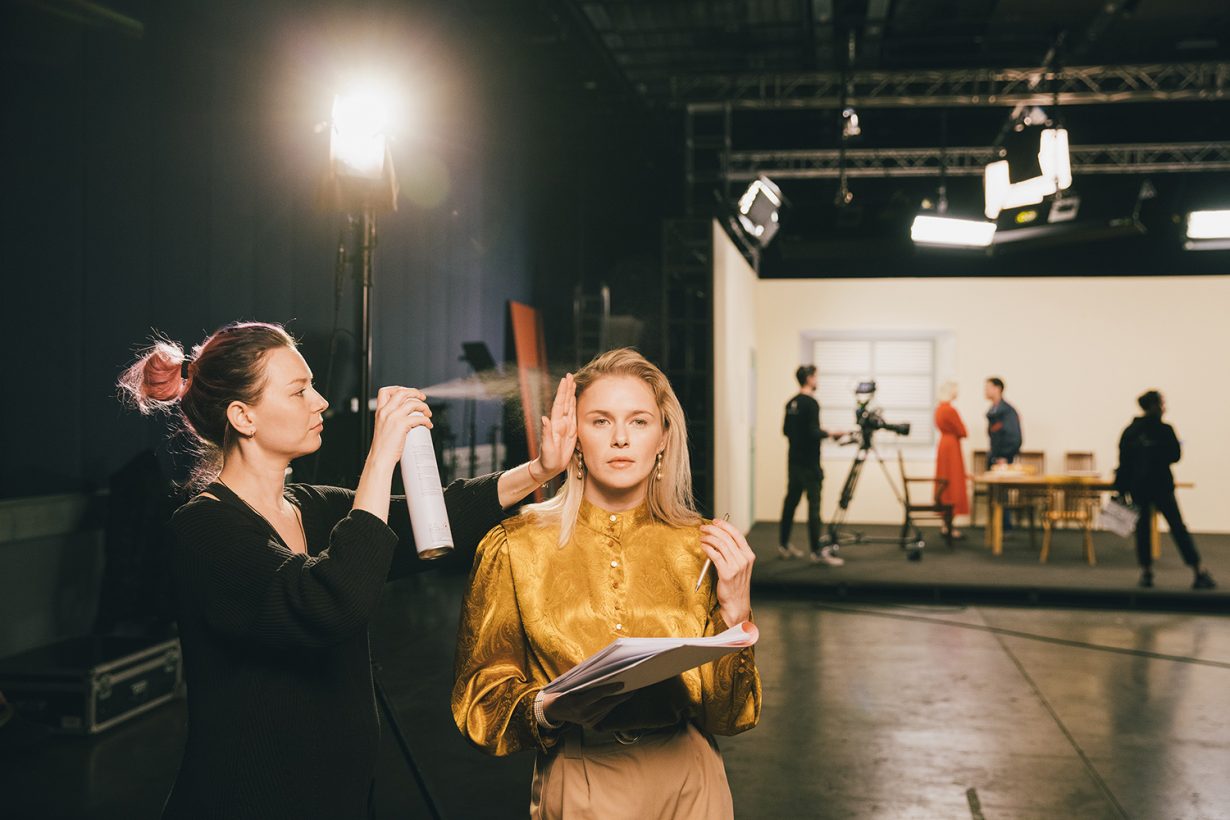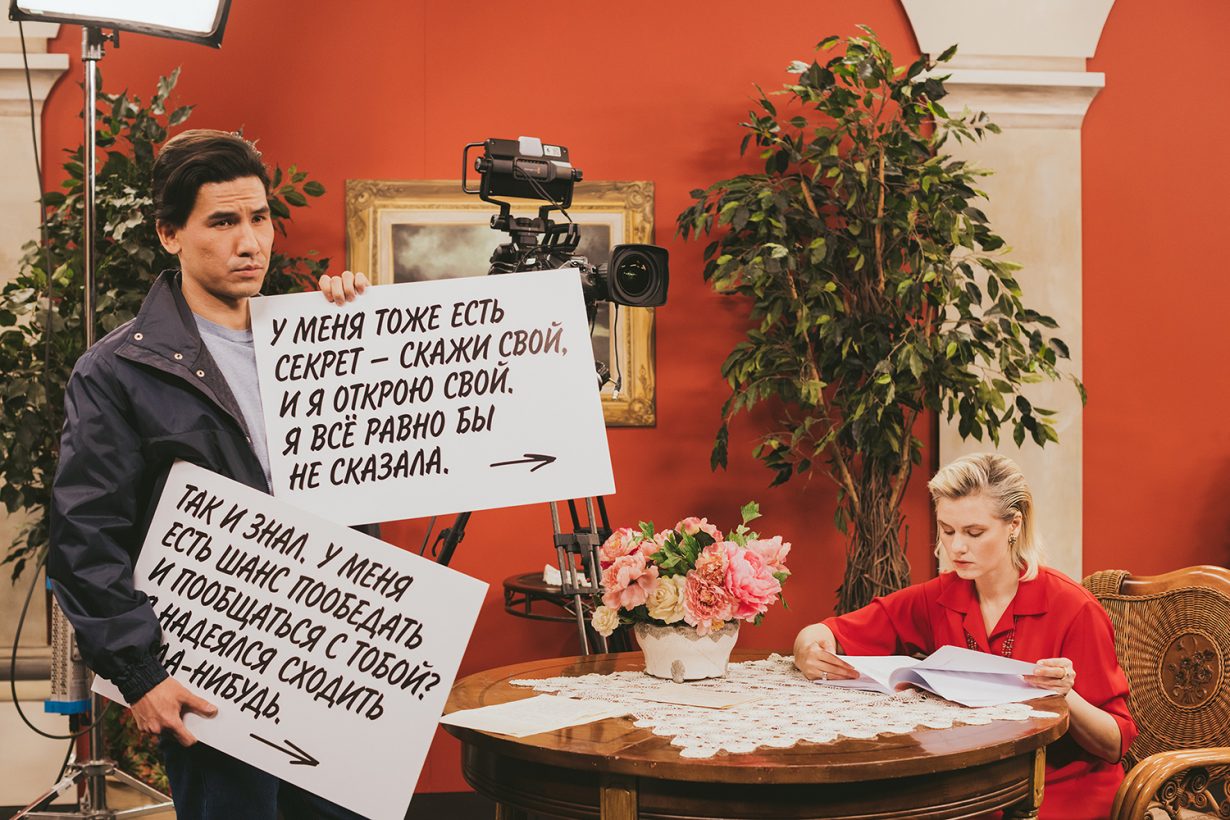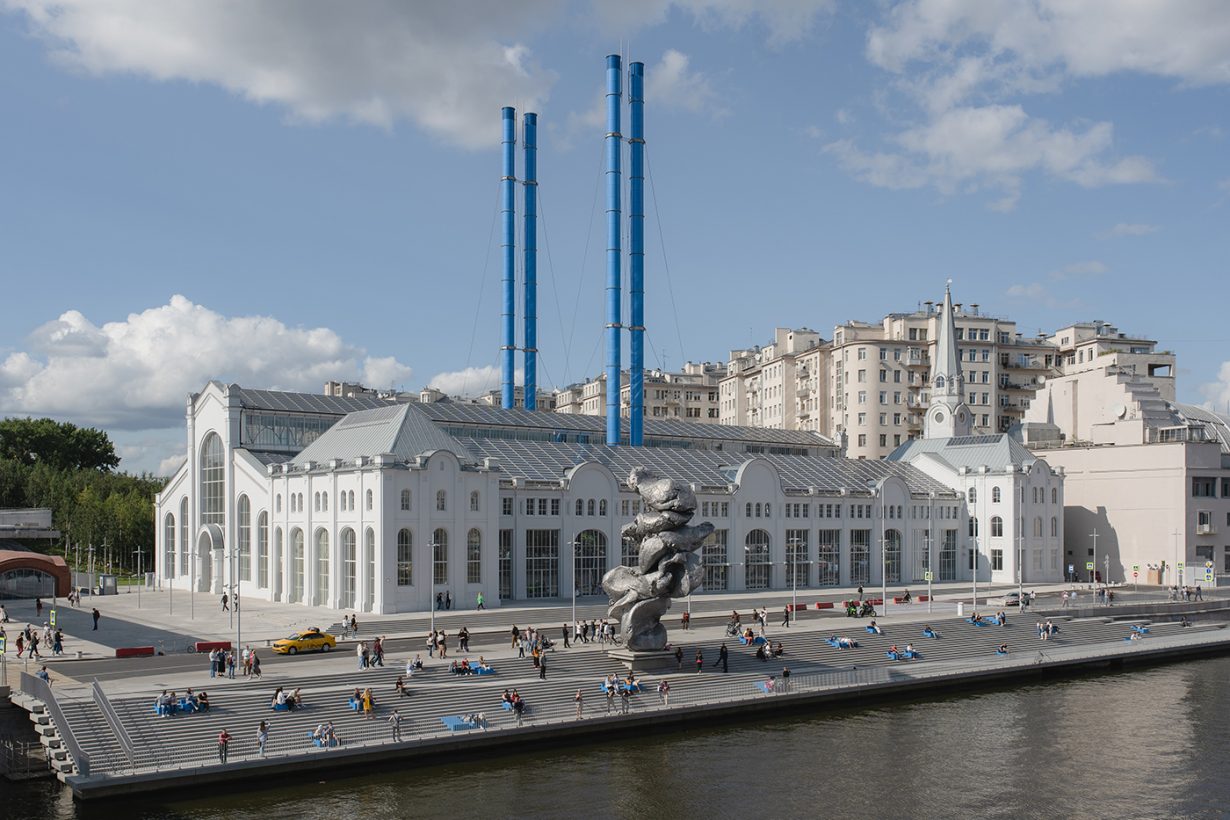Oliver Basciano reports from the opening of the V-A-C Foundation’s huge new art centre in the Russian capital

‘Soft power’ was popularised during the late 1980s by the American political scientist Joseph Nye as a term for describing how countries might get their way on the global stage not through threat or coercion but by persuading, using a variety of cultural and political means, other states ‘to want the outcomes that you want’. The old colonial powers were often in the lead on this, because the groundwork was laid (albeit by force) a long time ago: one 2019 ranking by communications group Portland put France as the leading purveyor of soft power, closely followed by the UK and Germany. Of course, we might interpret Nye’s ‘values’ as really being about economic ‘value’, and it’s no coincidence that those who obsess over such things are of a neoliberal bent (Nye was an aide to Bill Clinton): governmental organisations tasked with pursuing cultural soft power – the Institut Français and the British Council, for example – naturally focus their programmes on where their governments are looking to foster trade. The cynic might ask how much British art and cultural exchange is being used to shore up British arms deals in a host of countries of dubious reputation.

Nye’s concept sprang to mind when visiting Moscow’s GES-2, a newly opened, privately backed arts centre established by V-A-C Foundation. V-A-C is a nonprofit founded in 2009 by Leonid Mikhelson, a reclusive Russian billionaire who made his money in petrochemicals. Teresa Iarocci Mavica, an Italian who has lived in Russia since 1989 and, as the institution’s founding director, is the driving force behind the project, says V-A-C’s original purpose was to promote Russian culture abroad (Mavica stepped down shortly after the opening, V-A-C stating that the move was planned and that she would remain an adviser on international projects). Initially this was done by supporting exhibitions at institutions internationally and, since 2017, by staging shows and hosting residencies at the foundation’s Palazzo Zattere in Venice.
Now V-A-C is bringing international artists to Russia (along with critics and curators to see their wares), hosted (alongside local names) at a vast converted power station a short, icy walk up the Moskva River from the Kremlin. The design, by Renzo Piano, is sublime, in the strictest sense of the word: as you enter through what the architect calls an indoor piazza, a huge empty space that will host events and is designed as a place of congregation, you feel very small. It’s light, pleasant and airy, however, and there’s an aspirational gleam to the finish. There are countless public programming spaces; workshops complete with state-of-the-art 3D printers, woodworking tools, studio apparatus; an underground carpark that’s been fitted up with suitable ventilation to double as a dance venue. There’s a café and restaurant, and very helpful Russian- and English-speaking guides on hand, loaded up with lines of art theory made accessible. One enthuses about the tours her department will lead for older residents, children and deaf visitors. There is a ‘sensory experience room’ and tours instructed through dance, devised by a choreographer and a psychologist, that encourage visitors to ‘feel’ the building.

The exhibition spaces themselves are more discreet, intentionally so according to the foundation’s artistic director, Francesco Manacorda. “The spaces in which the public can meet are given priority within the architecture,” he says. “The galleries are belowground. The exhibitions are led by the public programme.” Indeed V-A-C bills GES-2 as a modern-day House of Culture, in reference to the old Soviet meeting places that promoted discussion and artistic activities as forms of social enrichment. Mavica explains, “Museums globally are looking for new ways of working, but we found it in an old Russian model.” The first People’s House was set up in Tomsk in 1882, but during the Soviet era they proliferated as Houses of Culture. “It was a place for hobbies, a place to share knowledge, to take care of each other,” Mavica adds. They also allowed the Soviet Union to disseminate its ideological values across the vastly dispersed, ethnically and culturally diverse republics.

Manacorda, formerly of Tate Liverpool, approached the Icelandic artist Ragnar Kjartansson to ringmaster the inaugural programme. As well as a group exhibition of artists who have influenced his own work, Kjartansson has staged one of his trademark durational performances. The artist is known for his use of pathos and repetition, and his interest in contrasting high and low culture. Over three months, across a plethora of sets reproduced throughout GES-2, Kjartansson is remaking 100 episodes of Santa Barbara (1984–93) – the first American soap opera to be broadcast in Russia – using Russian actors and the original Russian dubbing script. The whole season is titled Santa Barbara. How Not to Be Colonised? and Kjartansson is interested in how Russians – as the Soviet Union collapsed – claimed the TV show as their own, to the point that the expression ‘to do a Santa Barbara’ has entered Russian vernacular, describing high personal drama or the act of sharing your personal tribulations publicly. It was an extraordinary window, one Russian tells me when I ask her, into the life of the capitalist West, at a time of chronic food shortages at home, a view that Russians enthusiastically embraced. Amid the big hair, shoulder pads and melodrama, Santa Barbara was neoliberal American soft power in action.
Kjartansson tells me that during his childhood Iceland was a country caught geographically and politically between the Cold War powers. His school was closed to host the Russian press during the Reagan-Gorbachev summit in Reykjavík in 1986. His parents, as theatre directors, were courted by both sides, invited by the Americans and Soviets on cultural tours and exchange programmes (his father, a socialist, banned him from watching American soaps). Now, however, that Portland study ranks Russia a lowly 30 on its cultural diplomacy chart, and ‘softly’ has never been President Vladimir Putin’s modus operandi: the current massing of troops on Ukraine’s border is more his style.

Which perhaps explains the repeated line of questioning endured by V-A-C staff regarding possible state censorship. “Where are you from?” Mavica pointedly replied to a German journalist who raised the subject. “You don’t think your country has its problems?” Even I rolled my eyes when a British critic questioned if GES-2 would host a show by artist-provocateurs Pussy Riot, but nonetheless posed a related query on the political situation. (As it happens, within days of these exchanges, Memorial International, Russia’s foremost human rights organisation, cofounded by Andrei Sakharov at the height of Gorbachev’s opening up of the Soviet Union, would be deemed a danger and liquidated.) “Like any country you have to deal with the context, that’s not censorship,” Manacorda answered. “We are a house of culture, not a house of politics. I’m not here to knock the government or do firsthand activism. I’m here to support artistic speech, and if needed prepare the terrain for that to be received.” There’s no information yet on future programming, but a third show of the current season takes the Russian carnival culture as its subjects: contemporary artists charting not only how Peter the Great once introduced the masque ball as a way of Europeanising Russia, but also the spring rites of the various indigenous cultures of this great land mass.
Putin himself toured GES-2 two days before the press and public were allowed in, apparently giving it his blessing. Mikhelson and the president are sometime allies, and it is striking that a man of Mikhelson’s clout is needed to push contemporary art up the Russian governmental agenda. The Russian state prefers to keep its cultural offerings within the relative safety of its glorious eighteenth- and nineteenth-century heritage. Yet soft power has never been solely the preserve of nation states: art is a handy vehicle for individuals and corporations to push their values too. Thirty years ago Nye noted that ‘today other actors are becoming increasingly important… in modern times more complex coalitions affect outcomes’. Whether Mikhelson’s project will help Russia’s reputation, in which the West’s rabid Russophobia rubs up against real questions about freedom of expression in the country, is yet to be seen. Yet it is a personal flex too, however shy the man himself is. Soft power is a slow game.